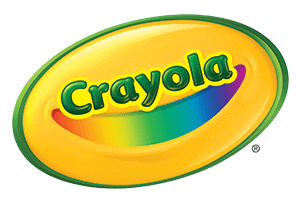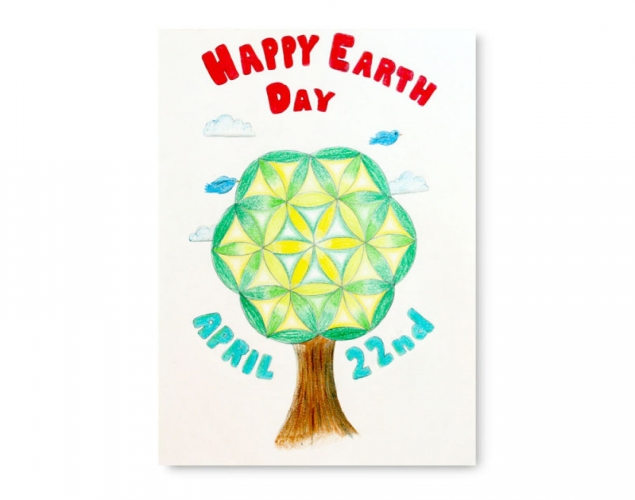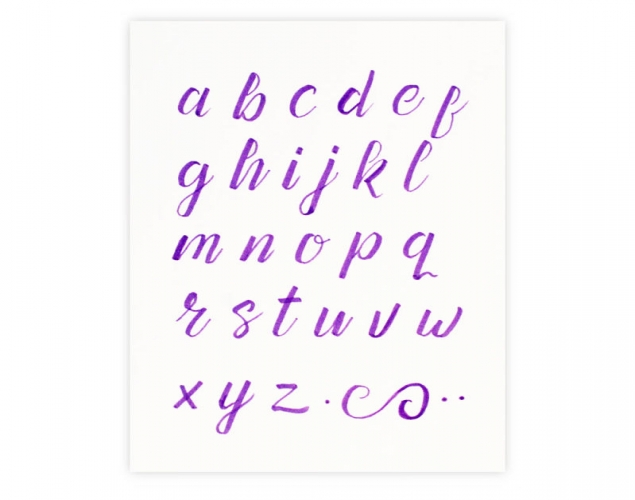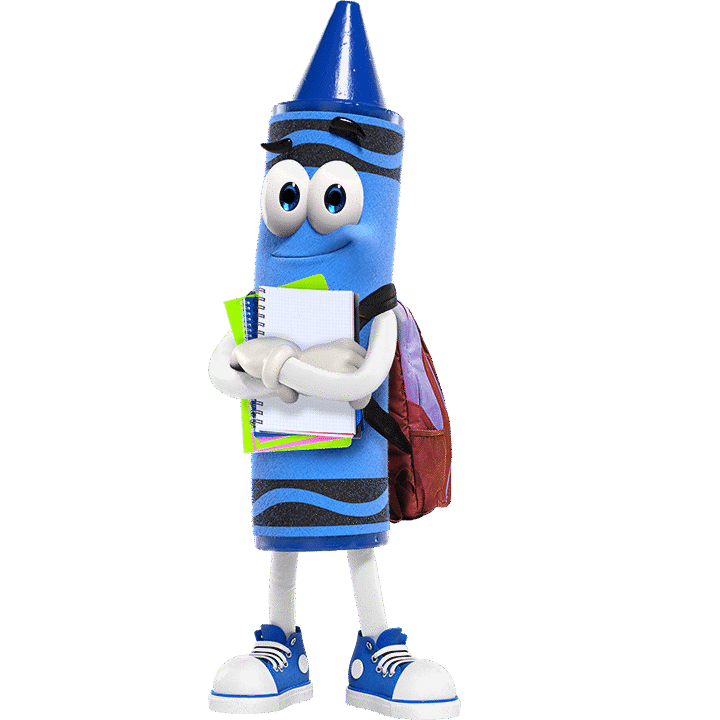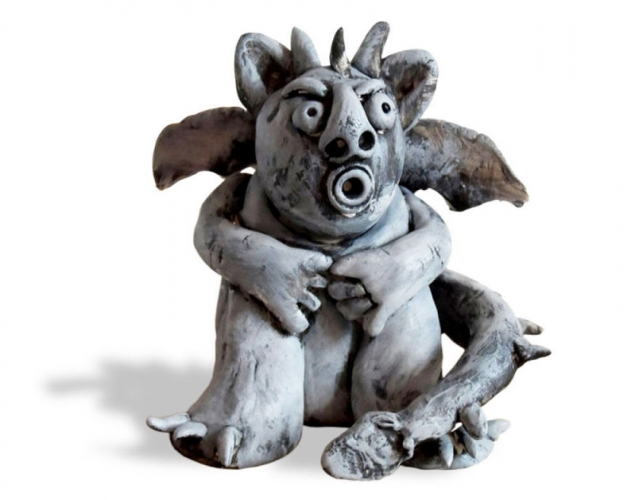
SELF-PORTRAIT – Seven Grandfather TeachingsStudents create a self-portrait based on the students' understanding and life experiences with one of the 7 Grandfather teachings.
Students create a self-portrait based on the students' understanding and life experiences with one of the 7 Grandfather teachings.
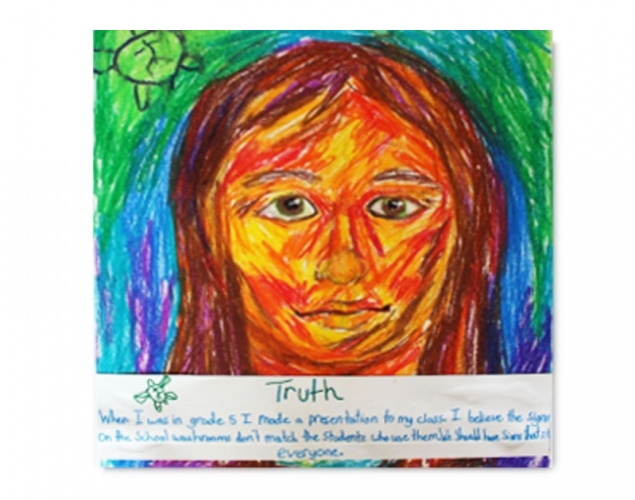
Supplies:
- Crayola Oil Pastels - 16 Colours
- Crayola Marker & Watercolour Paper - 22.9 cm x 30.5 cm (9" x 12")
- Crayola Fine Line Markers
- Pencils
- Erasers
Steps:
1
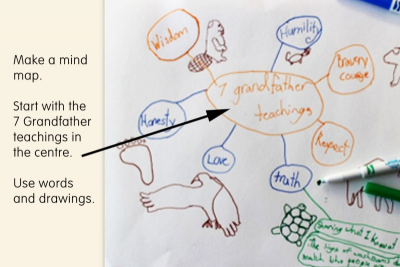
- Make a mind map.
- Begin with the 7 Grandfather teachings in the centre of your mind map.
- Brainstorm the Grandfather teachings using words, and drawings of the animals connected to each of the teachings.
- Reflect on personal life experiences that are connected to and exemplify the Grandfather teachings.
- Choose one life experience and use words/images to describe it.
- What did you say?
- How did you feel?
- What did you do? - Reflect on how your life is connected to the Grandfather teaching you chose.
- Share your reflections with a partner.
2
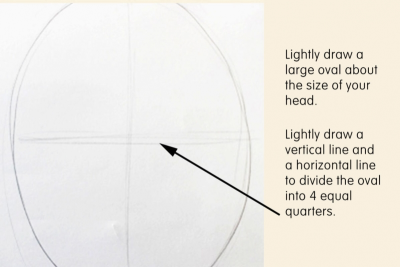
- Begin your self-portrait by drawing a large oval about the size of your head on drawing paper.
- lightly draw a vertical line dividing the oval in half
- then draw a horizontal line dividing the oval into 4 equal quarters
3
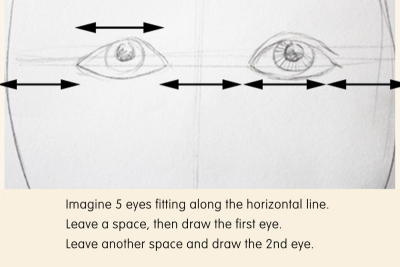
- Draw the eyes on the horizontal line.
- Use the eye as a unit of measurement, imagining the length of 5 eyes fitting across the face.
- begin the eye by drawing an almond shape, then a small black pupil inside, and a circular iris surrounding the pupil inside the eye
- the line forming the top of the eye is echoed by another line which creates an eyelid
- leave a space that is the length of an eye, and draw the second eye
- the eyebrows form a frame around the eye and echo the line of the eyelid above the eyes
4
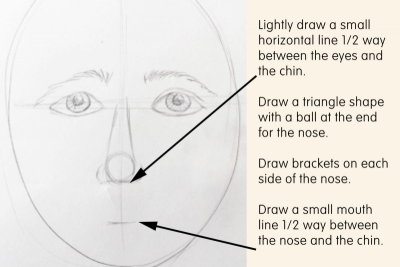
- Lightly draw a small horizontal line halfway between the eyes and the chin.
- This line crosses the vertical line marking the location for the nose.
- Draw a second horizontal line about halfway between the nose and the chin for the mouth.
- Create the nose by drawing a triangle shape with a ball at the end.
- The nostrils are made by drawing 2 brackets, one on each side of the nose.
- Keep your pencil lines light.
5
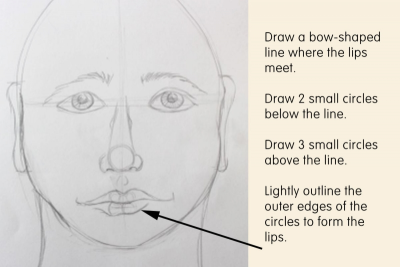
- Draw the mouth on the horizontal line between the nose and the chin.
- Begin the mouth by drawing a bow-shaped line where the lips meet.
- Next draw 2 small circles below the line, and 3 small circles above the line.
- Lightly outline the outer edges of the circles forming the top and bottom lips.
6
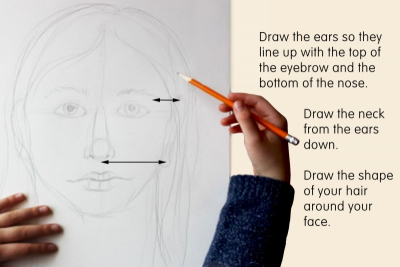
- Draw the top of the ear at the same height as the eyebrow.
- Draw the bottom of the ear at the same height as the bottom of the nose.
- Draw the neck from the ears down.
7
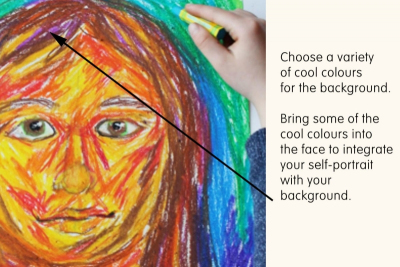
- Choose a variety of cool colours to draw the background of your self portrait.
- Bring some of your cool colours into your face to integrate your self portrait with your background.
8
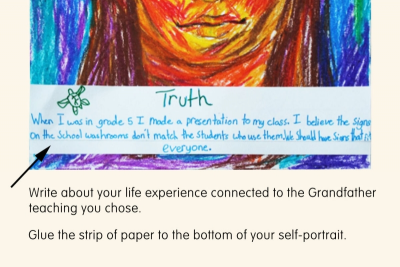
- Cut a strip of drawing paper that is the same width as your self-portrait.
- Write about your life experience connected to the Grandfather teaching you chose.
- Use markers that are similar colours to the oil pastels to write with.
- Make sure your writing clearly reflects your life experience, and connects to the Grandfather teaching you chose in a meaningful way.
- Add drawings connected to the Grandfather teaching.
- Glue the strip of paper to the bottom of your self portrait.
9
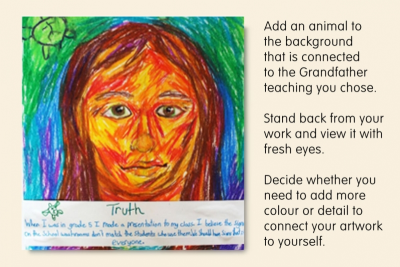
- Add an animal image to your background that is connected to the Grandfather teaching you chose.
- Make sure the colour you use to draw the animal shapes contrast with the background colours.
- Stand back from your artwork and view it with fresh eyes.
- Does your self-portrait reflect who you are?
- Decide whether you need to add more colour or detail to connect your artwork to yourself.
- Remember warm colours will come forward, and cooler colours will recede.
Subjects:
Language Arts,
Visual Arts,
First Nations, Metis, Inuit
Grades:
Grade 3,
Grade 4,
Grade 5,
Grade 6,
Grade 7,
Grade 8
